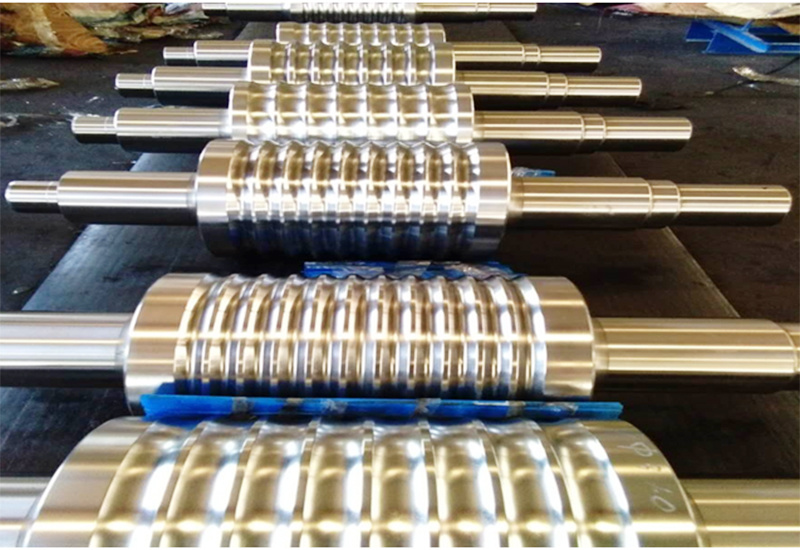
18
2022
-
07
How should roll neck bearings be maintained?
Aluminum rolling mill rolls and roll bearings are important components of the rolling mill. In rolling production, Roll they are in direct contact with the rolled metal, causing plastic deformation of the metal. Therefore, rolls are the main deformation tools of the rolling mill, and the rolls are supported by various bearings. The quality and service life of the rolls and roll bearings are directly related to the product quality, production efficiency, and production cost of the rolling mill. Therefore, the maintenance of roll bearings is particularly important.

I. Working Characteristics of Roll Bearings
Roll bearings are used to support rolls. Compared with general bearings, roll bearings have the following characteristics:
1. Strong load-bearing capacity. Due to the limitations of the overall size of the bearing seat, it cannot be larger than the smaller diameter of the roll body, and the roll neck is shorter, so the unit load on the bearing is larger. The unit pressure of general roller bearings is as high as 2000~4800Mpa, which is 2~5 times that of ordinary bearings, and the pv value (the product of unit pressure and linear velocity) is 3~20 times that of ordinary bearings.
2. Large speed difference. The operating speeds of different rolling mills vary greatly. For example, the exit speed of a modern six-stand cold tandem rolling mill has reached 42m/s, the exit speed of a high-speed wire rod rolling mill has reached 100m/s, while the exit speed of some low-speed rolling mills is only 0.2m/s. Obviously, different speed rolling mills should use different types of bearings.
3. Poor working environment. During hot rolling, Roll water, sewage, and scale are used for cooling. They can easily fall into the bearings. Cold rolling mills use process lubricants (emulsions, etc.) to lubricate and cool the rolls and workpieces, which cannot be mixed with bearing lubricants. Therefore, higher requirements are put forward for bearing sealing.
Therefore, the requirements for roll bearings are large load-bearing capacity, low friction coefficient, impact resistance, and the ability to work at different speeds. Structurally, the radial dimensions should be as small as possible (to allow for a larger roll neck diameter), and good lubrication and cooling conditions should be provided.
II. Maintenance of Roll Bearings
Roll bearings need to be periodically removed from the rolling mill for inspection and maintenance to improve the service life of the roller bearings. The frequency of bearing maintenance should be adjusted according to the operation of the rolling mill, mainly based on experience. The usual maintenance frequency is once every three months under full load operation, most rolling mills once every six months, and light rolling mills once every 12 months. After the first 1000 hours of operation, the roller bearings should be disassembled and inspected. During operation, it is necessary to clean the bearings and check the oil seals. If necessary, the oil seals should be completely replaced. If no abnormalities are found, the interval of the second inspection can be extended.
Roll The general steps for bearing maintenance are: 1. Track and record the position of the bearings in the rolling mill. It is recommended to use a special record card for roller bearing maintenance services. Also, pay attention to the special lifting methods and tools required when removing bearings from the bearing seat or inspecting bearings. 2. Clean the bearings. During the cleaning process, all scales, water, residual lubricants, and any other dirt that can cause serious wear and tear on the bearings should be removed. 3. Inspect the bearings, including visual inspection and minor repairs. Pay attention to inspecting and repairing the bearing seat, and reinstall the bearings in the bearing seat as needed. 4. Lubricate the bearings. Existing common rolling mills are characterized by large rolling force and high rolling speed, requiring the lubricant to have excellent viscosity-temperature performance, oxidation stability, rust prevention, and wear resistance. Therefore, lubricants with better performance should be selected to lubricate and maintain the roll bearings.
Roll
Innovation-driven, win-win cooperation
2025-06-17
